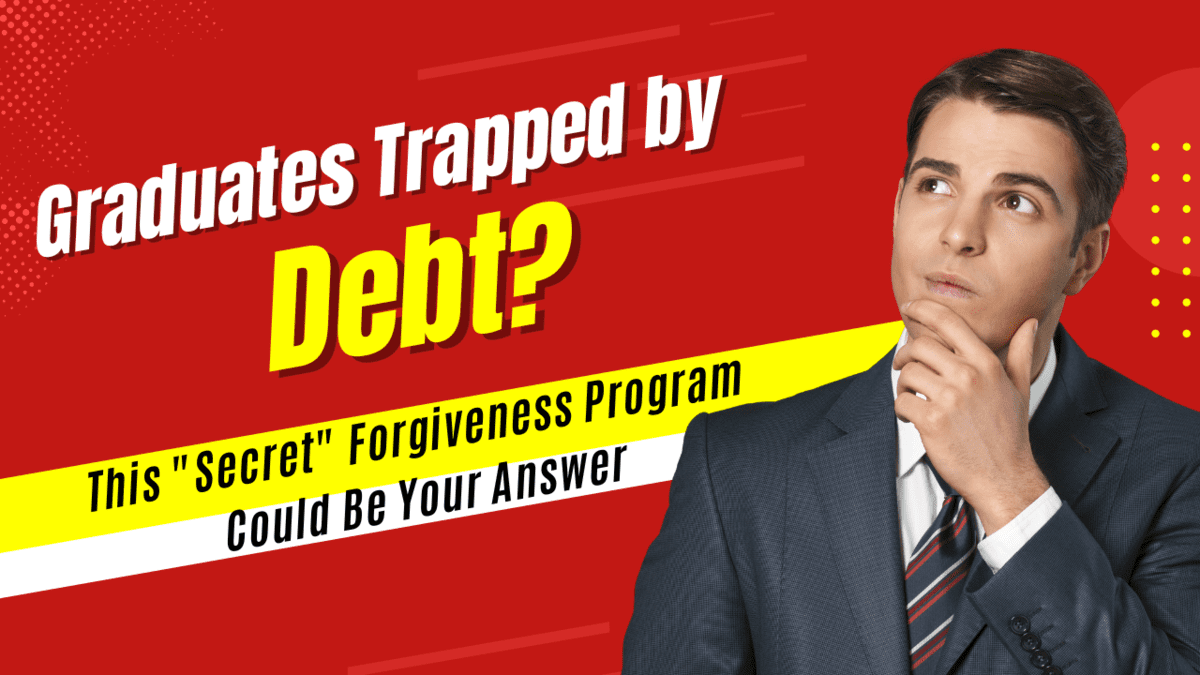Lots of graduates are buried in student loan debt. Debt can feel like a trap without an end. But some programs exist that may help you. They offer a way out after many years of payments.
What Student Loan Forgiveness Is
Loan forgiveness means having your remaining debt erased. This happens after you make payments for a set period. Qualifying for forgiveness depends on your job, loans, and repayment plan.
With forgiveness, the leftover loan balance is canceled. You are no longer required to pay it back. This can provide relief when debt feels crushing.
Major Federal Forgiveness Programs
Several federal programs could help wipe away your loans. Here are some top options and how they work:
Public Service Loan Forgiveness (PSLF)
PSLF forgives loans for public service workers after ten years of payments. Jobs like government, military, nonprofit, and public health qualify. You must have Direct Loans and an income-driven repayment plan. After 120 payments working full-time for a qualified employer, the remainder is forgiven.
Teacher Loan Forgiveness
For teachers in low-income schools and educational agencies, up to $17,500 can be forgiven after five years. You must teach specific subjects and meet other requirements. It applies to federal Direct and Stafford Loans.
Income-Driven Repayment (IDR) Plans
Plans like PAYE, REPAYE, and IBR offer forgiveness after 20-25 years of payments based on your income. It would help if you recertified your income annually. All federal loans qualify except parent PLUS. Loan discharge comes decades after school, but the monthly payment is affordable.
Other Options to Look Into
Along with federal programs, you may find help through your state, employer, or for exceptional circumstances:
- State loan repayment programs assist professionals like doctors, nurses, and teachers. See if your state offers aid.
- Employers like schools or hospitals may pay back some of your debt as a benefit. Ask your HR department.
- Closed school discharge forgives loans if your school closed while enrolled there.
- Total disability discharge cancels federal loans in cases of permanent disability.
- Bankruptcy will rarely discharge student loans, but this can be argued in some cases.
- Refinancing or consolidation may provide better terms but lose forgiveness options.
Steps to Start the Process
First, understand the eligibility criteria for each program that interests you. Confirm you have suitable loans, jobs, and repayment plans. Then, submit documentation annually and track your progress. Certify employment and income on time. Stay organized, and don’t lose hope. After many years of steady payments, the remainder of your federal student loans could be forgiven.
While not quick or easy, loan forgiveness programs offer real hope. Do your research to see if these options can help you finally overcome debt and move forward.
The Long Road to Freedom From Debt
For many graduates, student loans feel like a life sentence. But after decades of payments, federal forgiveness programs provide a light at the end of the tunnel.
Eyes on the Prize
The promise of future forgiveness is a bright spot during long years of repayment. Programs like PSLF, Teacher Loan Forgiveness, and IDR motivate me to make those monthly payments.
Even if an IDR plan takes 20-25 years, your remaining balance could be wiped away someday. PSLF offers forgiveness even sooner, at ten years, for public service employees.
Steady payments combined with qualifying employment get you closer every month. Keep your eyes on the prize, and don’t give up.
Resources to Guide You
Thankfully, you don’t have to navigate repayment alone. Here are resources that can help:
- Your loan servicer – Confirm eligible plans and that your account is in good standing.
- The Federal Student Aid (FSA) website Details all government forgiveness programs.
- The PSLF Help Tool – Tracks qualifying PSLF payments and employment.
- Your employer’s HR department – For any work-based repayment help.
- StudentLoanHero.com – Provides calculators, guides, and expert advice.
- A financial advisor – Can review options and discuss strategy.
Potential Pitfalls to Avoid
While forgiveness brings hope, there are hazards along the way:
- Missing annual deadlines for income or employment certification. This can jeopardize your progress.
- Switching to an ineligible repayment plan by accident. Always confirm first.
- Having your loans in default. This disqualifies you. Act fast to rehabilitate loans.
- Working for an employer that seems eligible but doesn’t qualify. Verify employers.
- Consolidating loans can sometimes restart the clock and delay forgiveness.
Staying on top of paperwork, communicating with your servicer, and asking for help will keep you on track.
The road is long, but take it step-by-step. Federal forgiveness programs offer the chance to eliminate student debt after many years finally. Keep this dream close as you persist through the journey.
Lightening the Load Along the Way
The promise of forgiveness in the future doesn’t make the long repayment path any more accessible. Thankfully, there are ways to reduce the burden as you steadily progress toward freedom from student debt.
Lower Monthly Payments
Enrolling in an income-driven repayment (IDR) plan can significantly lower your monthly payment. Plans like PAYE, REPAYE, and IBR base your payment on your income and family size rather than your total loan balance. This makes managing payments more affordable, even if it takes longer for forgiveness.
Also Read – Private Student Loan Forgiveness: A Complete Guide
Tax Benefits
Certain student loan interest payments are tax deductible, which reduces your taxable income. The savings here can be applied toward paying down the principal.
Employer Student Loan Repayment Assistance
Ask your human resources department if they offer any student loan repayment benefits. Some employers will make regular contributions toward your loans as an employee perk.
Pay Raises and Promotions
As your income grows over time, aim to increase how much you pay toward loans above the monthly minimum due—making extra principal payments when possible speeds up the path to forgiveness.
Loan Consolidation
Consolidating and refinancing loans may help simplify repayment of federal loans into one payment at a lower interest rate. Just be sure to research how consolidation interacts with forgiveness programs first.
State and Local Assistance Programs
Look into student loan repayment programs that your state or city might offer for certain professions. Every little bit toward loans helps.
While long, the road to forgiveness doesn’t have to be miserable. Find creative ways to make repayment more affordable and bearable as you progress each day.
Also Read – 5 Mistakes Costing You Student Loan Forgiveness and How to Fix Them Now
Conclusion
The path to student loan forgiveness is long. It requires many years of steady payments and paperwork. But federal programs like PSLF and IDR plans offer real hope. Your remaining debt could eventually be wiped away.
Forgiveness gives a light to move toward. It motivates you to keep making those monthly payments. Celebrate each one as progress.
Use available resources so you understand the programs. Make sure you qualify and track your progress. Ask for help if you have questions.
Reduce monthly costs along the way when you can—lower payments, tax benefits, employer aid, and promotions all help.
Stay organized. Meet annual deadlines for income and employment forms. This ensures you remain on track.
Persist through the long road. Federal forgiveness programs make freedom from student debt possible someday. The path ahead may be extended and challenging at times. But your goals are within reach if you keep moving forward.
Latest Posts –

